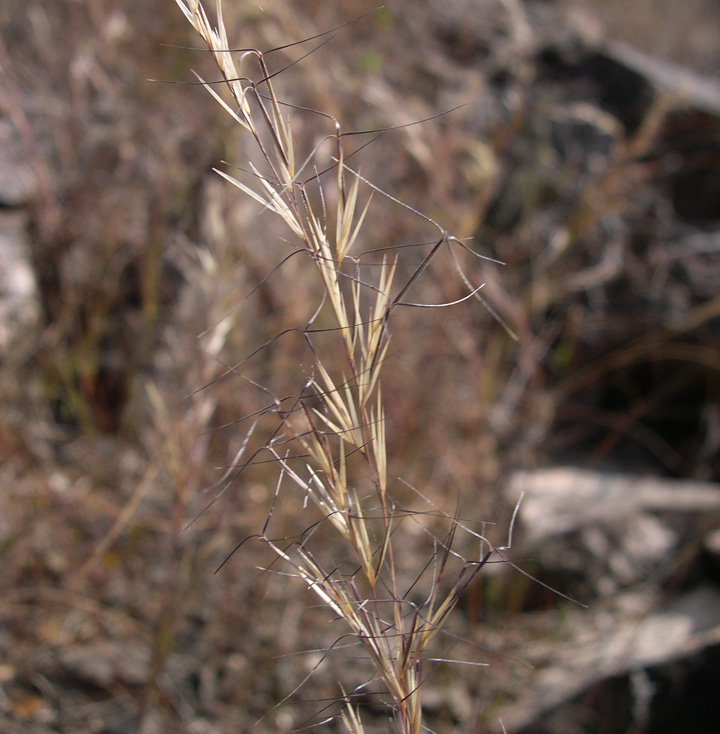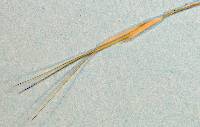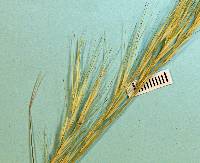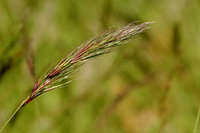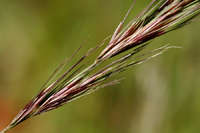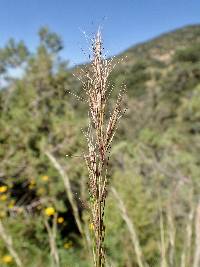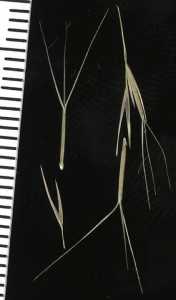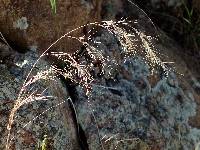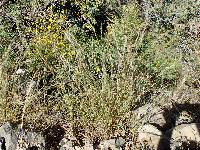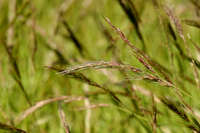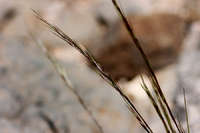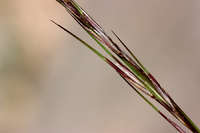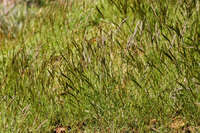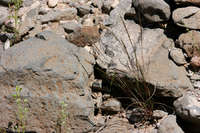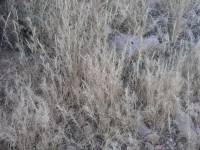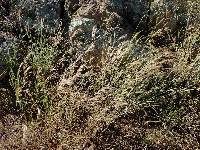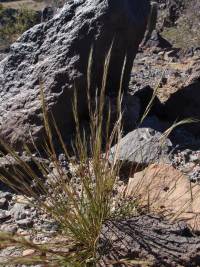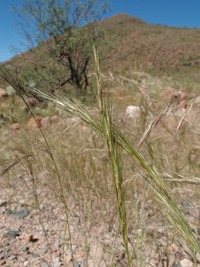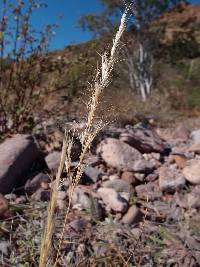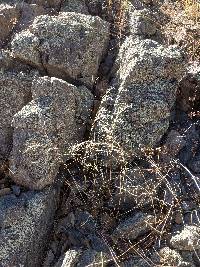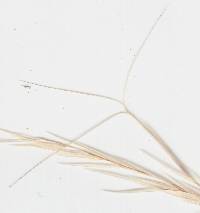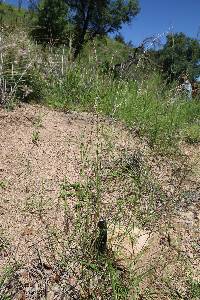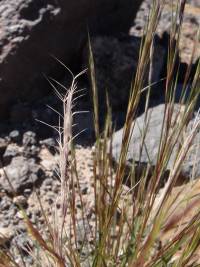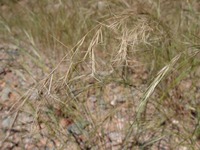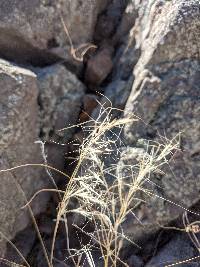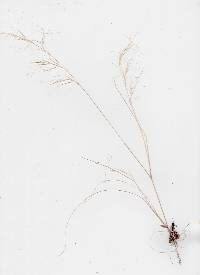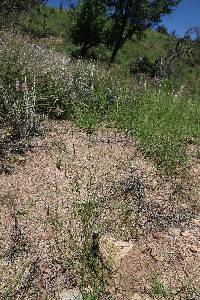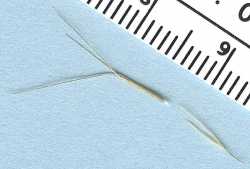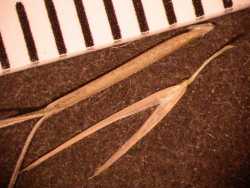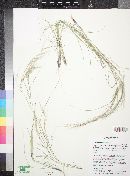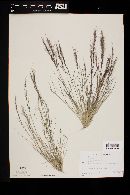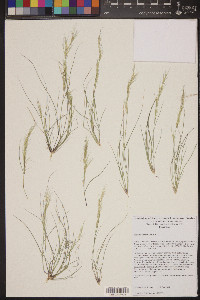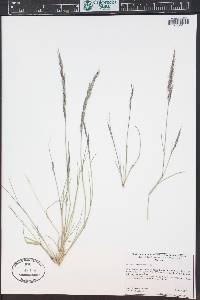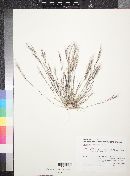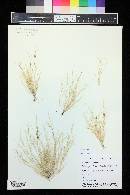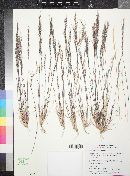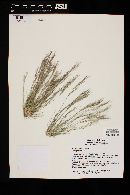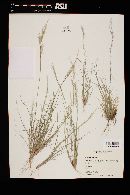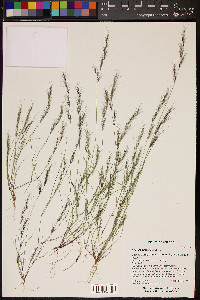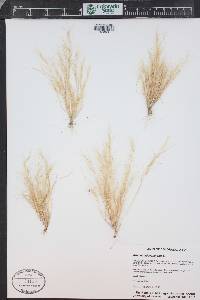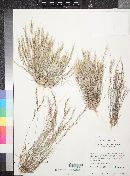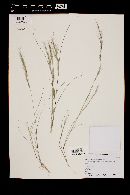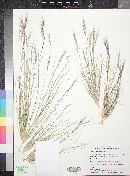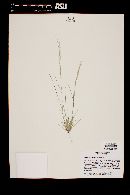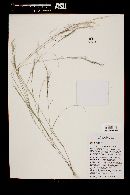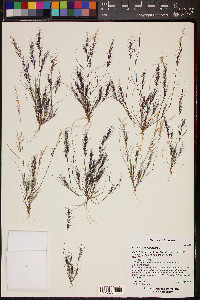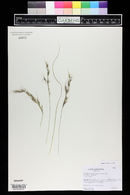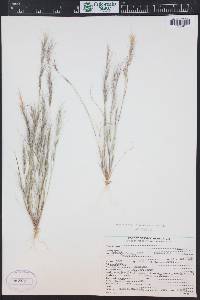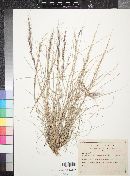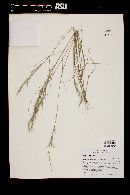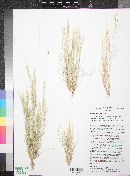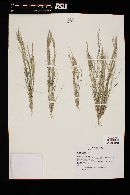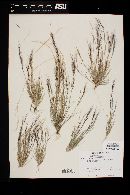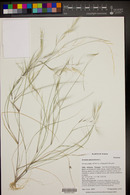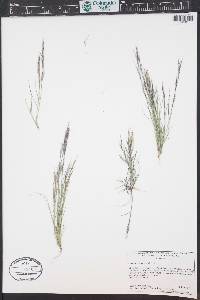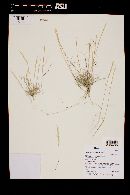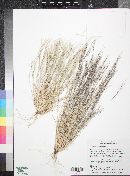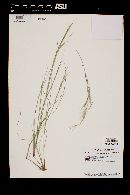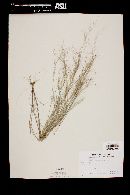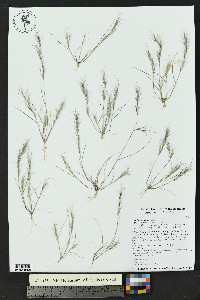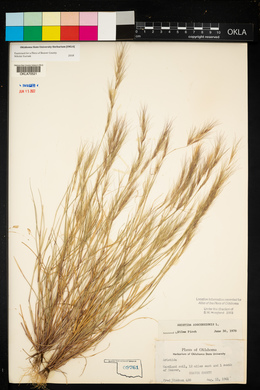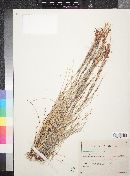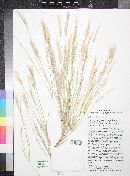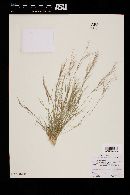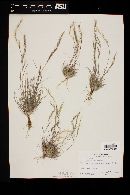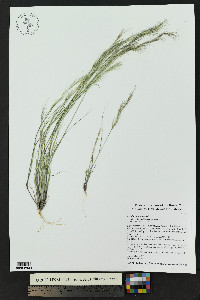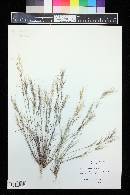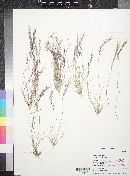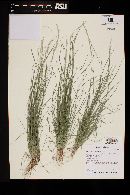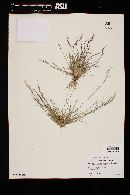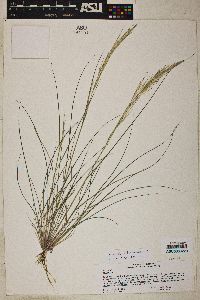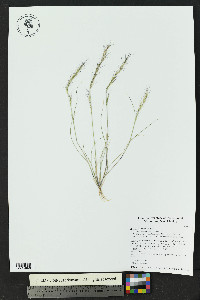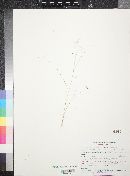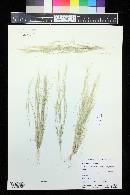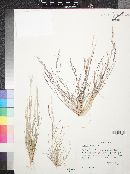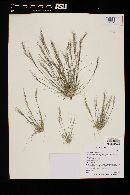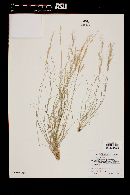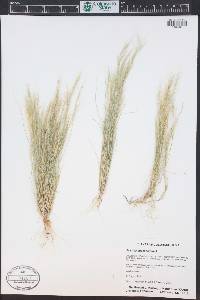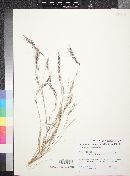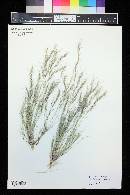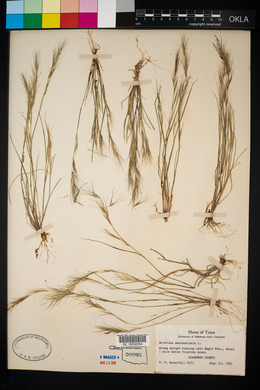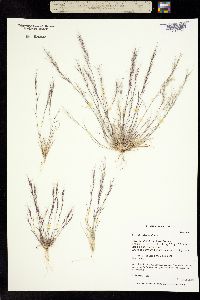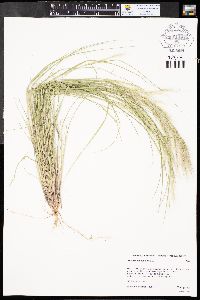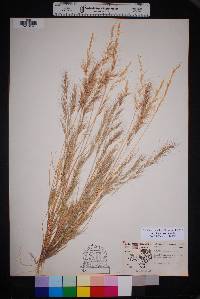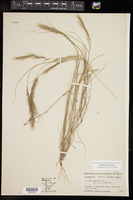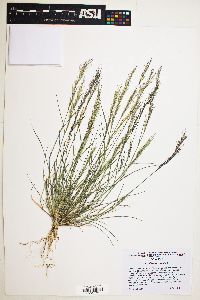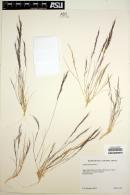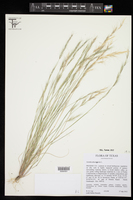Aristida adscensionis
|
|
|
|
Family: Poaceae
Six-Weeks Three-Awn, more...sixweeks threeawn, six weeks threeawn (es: zacate tres barbas, tres barbas, zacate cola de zorra, zacate de semilla)
[Aristida abyssinica Trin. & Rupr., moreAristida adscensionis f. modestina Hack., Aristida adscensionis f. viridis Kuntze, Aristida adscensionis subsp. adscensionis , Aristida adscensionis subsp. caerulescens (Desf.) Bourreil & Trouin, Aristida adscensionis subsp. guineensis , Aristida adscensionis subsp. heymannii , Aristida adscensionis var. abortiva Beetle, Aristida adscensionis var. breviseta Hack., Aristida adscensionis var. bromoides (Kunth) Henrard, Aristida adscensionis var. canariensis (Willd.) T. Durand & Schinz, Aristida adscensionis var. coarctata (Kunth) Kuntze, Aristida adscensionis var. condensata (Hack.) Henrard, Aristida adscensionis var. humilis (Kunth) Kuntze, Aristida adscensionis var. interrupta (Cav.) Beetle, Aristida adscensionis var. mexicana Hack. ex Henrard, Aristida adscensionis var. modesta Hack., Aristida adscensionis var. nigrescens (J. Presl) Beetle, Aristida adscensionis var. normalis Kuntze, Aristida adscensionis var. scabriflora Hack., Aristida adscensionis var. typica Stapf, Aristida americana var. bromoides , Aristida arabica Trin. & Rupr., Aristida bromoides , Aristida canariensis Willd., Aristida coarctata Kunth, Aristida debilis Mez, Aristida dispersa Trin. & Rupr., Aristida dispersa var. bromoides (Kunth) Trin. & Rupr., Aristida dispersa var. coarctata (Kunth) Trin. & Rupr., Aristida dispersa var. humilis (Kunth) Trin. & Rupr., Aristida dispersa var. nana Trin. & Rupr., Aristida dispersa var. nigrescens (J. Presl) Trin. & Rupr., Aristida fasciculata Torr., Aristida festucoides Steud. & Hochst., Aristida gigantea L. f., Aristida gigantea var. arabica (Trin. & Rupr.) Cufod., Aristida grisebachiana E. Fourn., Aristida grisebachiana var. decolorata E. Fourn., Aristida grisebachiana var. grisebachiana E. Fourn., Aristida guineensis Trin. & Rupr., Aristida heymannii , Aristida humilis Kunth, Aristida macrochloa Hochst., Aristida maritima Steud., Aristida mauritiana Hochst. ex A. Rich., Aristida modatica Steud., Aristida nana (Trin. & Rupr.) Steud., Aristida nigrescens J. Presl, Aristida pusilla Trin. & Rupr., Aristida schaffneri E. Fourn., Aristida stricta var. decolorata E. Fourn. ex Dávila & Sánchez-Ken, Aristida stricta var. grisebachiana E. Fourn. ex Dávila & Sánchez-Ken, Aristida submucronata Schumach., Aristida thonningii Trin. & Rupr., Aristida vulgaris var. arabica Trin. & Rupr., Aristida vulgaris var. canariensis (Willd.) Trin. & Rupr., Chaetaria curvata Nees] |
Plants short- to long-lived annuals. Culms (3)10-50(80) cm, often
highly branched above the base. Leaves cauline, glabrous; sheaths
shorter than the internodes, not disintegrating into threadlike fibers; ligules
0.4-1 mm; blades 2-14 cm long, 1-2.5 mm wide, flat to involute. Inflorescences
panicles, 5-15(20) cm long, 0.5-3 cm wide, often interrupted below; nodes
glabrous or with straight, less than 0.5 mm hairs; primary branches 1-4
cm, erect to ascending, without axillary pulvini, with 3-8 spikelets. Spikelets
crowded. Glumes unequal, 1-veined, acuminate; lower glumes 4-8 mm;
upper glumes 6-11 mm; calluses 0.5-0.8 mm; lemmas 6-9 mm,
slightly keeled, midveins scabrous, junction with the awns not evident; awns
not disarticulating at maturity, flattened and straight to somewhat curved at
the base, central rib flanked by equally wide pale wings; central awns
7-15(20) mm; lateral awns somewhat shorter, occasionally only 1-2 mm; anthers
3, 0.3-0.7 mm. 2n = 22. Aristida adscensionis grows in waste ground, along roadsides, and on degraded rangelands and dry hillsides, often in sandy soils. It is associated with woodland, prairie, and desert shrub communities. Its range extends from the United States south through Mexico and Central America to South America. Because A. adscensionis is highly variable in height, panicle size, and awn development, several varieties have been described. None are recognized here because most of the variation appears to be environmentally induced. Plant: Annual grass 10-30 cm; inflorescence narrow and spikelike, often with a purplish color; spikelets with one floret, unequal glumes; lemma elongated into a twisted awn column, apex bearing three awns 5-15 mm long. Notes: This is a very widespread species in the drier areas of the world. Becauseý of the numerous morphological forms many infraspecific names have been proposed. However, many of the distinctive forms are connected by intergrading forms, and for this reason no infraspecific taxa are recognized in this Catalogue pending a world-wide revision of this taxon. References: Delta World Grasses FNA 2003, Gould 1980 Common Name: sixweeks threeawn Duration: Annual Nativity: Native Lifeform: Graminoid General: Small tufted annual, erect stems 10-50 cm, highly branched above base sheaths have papery margin, shorter than internodes. Vegetative: Blades flat, 2-14 cm long, 1-2.5 mm wide, flat to involute, 3-4 veins on each side of midrib, glandular hairs at base of blade; ligule ciliate, 0.5 mm, some long hairs 2-3 mm; collar with hairy margin, glandular. Inflorescence: Dense panicles, contracted, often interrupted, 5-15 cm long with spikelets aggregated on short, widely-spaced branches, glumes unequal, lower glume 1-nerved, 5-8 mm, rough-textured on nerve, broad, upper glume 8-11 mm; lemma 6-9 mm long, pubescent on callus, rough-textured on slightly keeled midrib, 3 awns, 7-15(20) mm long, flattened at base, lateral awns slightly shorter. Ecology: Found on dry sandy or rocky slopes, deserts, dry mesas, often on disturbed soils from 1,000-6,000 ft (305-1830 m); flowers June-October. Distribution: Much of the western US: c and s CA north through NV west to KS and NE; south to s MEX. Notes: If you are looking at an annual Aristida, chances are it's this species. Distinguished by being an annual, erect three-awn grass, sometimes bunched at the base or only with a few culms branched above the base. The panicles are condensed with appressed branches and spikelets with two awns shorter than the third (sometimes only slightly so). It can form dense stands after summer rains and is generally common in the southwest deserts. Provides good forage, especially during summer. The only other annual three-awn in the Southwest is A. oligantha, which has more veins (3-7) on its glumes and sparsely flowered panicles with longer (>2 cm), more divergent awns. Ethnobotany: Unknown Etymology: Aristida is from the Latin arista for awn, while adscensionis is thought to refer to Ascension Island. Synonyms: Aristida adscensionis var. abortiva, A. adscensionis var. modesta, A. fasciculata Editor: SBuckley 2010, FSCoburn 2014, AHazelton 2015 A chiefly tropical sp. with the awns flat at the base, the central one 8-15 mm, the first glume half to two-thirds as long as the second, is rarely adventive in our range. Gleason, Henry A. & Cronquist, Arthur J. 1991. Manual of vascular plants of northeastern United States and adjacent Canada. lxxv + 910 pp. ©The New York Botanical Garden. All rights reserved. Used by permission. |
|
|
|

